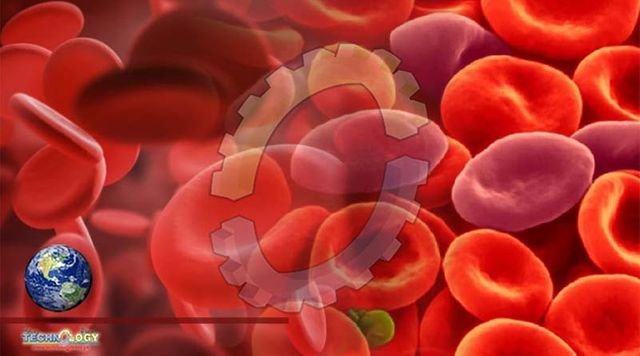Unwanted immune responses threaten to derail some gene therapy. But researchers are seeking ways to combat harmful inflammation.

After years of disappointment, gene-therapy research has undergone a renaissance, with several high-profile drug approvals and a string of promising clinical-trial results against devastating genetic diseases, including sickle-cell disease and some blood cancers.
But as researchers attempt to develop treatments for new conditions, they are also trying to work out how to cope with worrying signs that immune responses to the therapies could hinder their efforts — and generate dangerous side effects.
The concern was a popular topic at the American Society of Gene and Cell Therapy (ASGCT) annual meeting in Washington DC, held from 16 to 19 May, as presenters discussed the effects of inflammation on gene therapy and how to mitigate them. “Inflammation is par for the course, but often we don’t talk about it,” said Christine Kay, a surgeon at Vitreoretinal Associates in Gainesville, Florida, during a talk about gene therapies for eye disorders. “I’m glad that we’re beginning to.”
Safety has long been a primary concern in gene-therapy research, particularly after the death of a gene-therapy trial participant and the discovery of gene-therapy linked cancers around the turn of the century closed clinical trials and caused investors to pull away from the burgeoning field.
But the field has resurged over the past decade, and several gene therapies have been approved by regulators around the world to treat conditions including cancer, blindness, and a metabolic disorder. “We are on a roll with gene therapy,” Francis Collins, acting science adviser to US President Joe Biden, told the ASGCT meeting. “But we still have thousands of diseases that have not been approached.”
Researchers have long been wary of how immune responses could make gene therapies less effective. The treatments often rely on a virus to ferry a gene into cells, but if the recipient already has antibodies against that virus, an immune response could hinder the treatment. As a result, participation in gene-therapy clinical trials is often limited to people who do not already have such antibodies.
In most gene-therapy studies, the gene is carried by one of several adeno-associated viruses (AAVs), a group of small viruses that have been studied for use in the field for nearly four decades. Thousands of people have received an AAV-based gene therapy, said Denise Sabatino, a haematology researcher at Children’s Hospital of Philadelphia in Pennsylvania, at the meeting. Some gene therapies approved by the US Food and Drug Administration — including Zolgensma (onasemnogene abeparvovec), a treatment for spinal muscular atrophy, and Luxturna (voretigene neparvovec), which treats a form of retinal dystrophy that can cause blindness rely on these viruses.
AAV vectors are also being used in clinical trials of gene-editing therapies, including those based on the popular CRISPR–Cas9 system. And the US National Institutes of Health (NIH) has launched a programme to study AAV vectors, in the hope of fostering a gene-therapy pipeline in which developers can simply swap a new therapeutic gene into the viral genome to treat a particular disease, without having to conduct large clinical trials to establish safety. Large clinical trials are particularly difficult when it comes to treatments for rare genetic disorders.
But as researchers push to treat more conditions and improve the effectiveness of their therapies, “this has become a real and present concern in AAV gene therapy”, said Fraser Wright, a gene-therapy researcher and co-founder of Spark Therapeutics in Philadelphia, which developed Luxturna, at the meeting. “As we’ve gone up in AAV dosing in human subjects, we have seen more and more severe adverse events.” Some of those events have included deaths, Fraser added.
The main concern used to be that antibodies against an AAV or its cargo would prevent the gene therapy from working or preclude the possibility of giving multiple doses, said Wright. But more recently, researchers have realized that antibodies could stimulate the production of inflammatory molecules, activate cell-death pathways and trigger the development of killer T cells that could target AAV-containing cells for destruction.
Researchers at the ASGCT meeting reported efforts to tackle this inflammation from a variety of angles. Some are looking for alternatives to AAVs, and Collins noted that the NIH’s Somatic Cell Genome Editing programme is studying both viral and non-viral vectors. “I think a lot of us are worried about depending on AAV forever, and would like to have things with maybe less in the way of plausible risk,” Some are trying to ‘humanize’ the AAV genome, to make it less likely to activate immune pathways. For example, in humans, when the DNA base C is followed directly in the genome sequence by the base G, it often carries a chemical group called a methyl.
AAV has a higher percentage of CG groups without a methyl a potential red flag to the immune system. Wright presented data showing that increasing the methylation of CG-rich regions decreased the activation of inflammation-promoting molecules called cytokines. But, he added, there is a potential trade-off: the same methylation, if used too heavily, might also suppress gene expression, including that of the therapeutic gene carried by the AAV.
Source: This news is originally published by nature